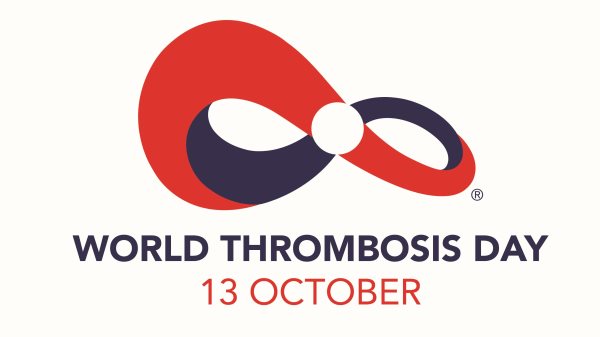October 13 is World Thrombosis Day, a day established to raise awareness of thrombosis or life-threatening blood clots. While perhaps not well known, thrombosis is a serious and life-threatening condition. Here are five things to know:
1. What is Thrombosis?
Thrombosis is a condition where a blood clot, also called a thrombus, forms and blocks a patient’s blood vessel.
The two main types of thrombosis are venous thrombosis, when a blood clot blocks a patient’s vein, and arterial thrombosis, when a blood clot blocks an artery.
2. Who Does Thrombosis Impact?
According to the International Society on Thrombosis and Haemostasis (ISTH), up to 900,000 people in the U.S. are affected by blood clots each year, and about 100,000 of those people will die.
Venous thromboembolism (VTE) is a leading cause of death and disability worldwide, with about 10 million cases occurring annually. VTE is a condition in which a patient develops a blood clot most often in the deep veins of the leg, arm or groin, known as deep vein thrombosis or DVT, which then travels and lodges in the lungs, referred to as a pulmonary embolism or PE.
3. What Causes Thrombosis?
Being in the hospital is a major risk factor for the development of blood clots due to decreased mobility from bedrest or recovery, or who experience blood vessel trauma due to surgery or other serious injury, according to ISTH.
While 85% of Americans say they know what a blood clot is, only 27% have an understanding of VTE, according to ISTH. Up to 60% of all VTE cases occur during or within 90 days of hospitalization, with more than 540,000 hospitalized patients in the U.S. developing the condition, making it a leading preventable cause of hospital death.
Procedures with increased VTE risks include orthopedic surgery, major general surgery especially involving the abdomen, pelvis, hip or legs, major gynecological surgery, urological surgery, neurosurgery, cardiothoracic surgery, major peripheral vascular surgery, and chemotherapy.
Other risk factors for VTE include not moving for long periods of time (due to bedrest or long-duration travel), age (60+), cancer, trauma, use of estrogen-based medication, obesity, pregnancy or recent birth, smoking, alcohol consumption, and personal or family history of blood clots or stroke.
4. How Can You Protect Yourself from Thrombosis?
According to ISTH, thrombosis does not discriminate as clots can affect anyone regardless of age, ethnicity, race, or location. The most important thing you can do to protect yourself is learning your risk factors.
Always be mindful of the warning signs for thrombosis and contact your doctor immediately if you experience any of the following:
| Deep Vein Thrombosis (DVT) - Pain or tenderness, often starting in the calf - Swelling, including the ankle or foot - Redness or noticeable discoloration - Warmth |
Pulmonary Embolism (PE) |
Early diagnosis and treatment can often lead to recovery. However, long-term complications may occur. Talk to your doctor if you are at risk for VTE about appropriate prevention methods or if you experience any warning signs of DVT or PE.;
5. What is Vitalant’s Role in Fighting Thrombosis?
Vitalant’s coagulation laboratory provides special services to patients fighting thrombosis in the form of highly specialized screenings and diagnostic tests for causes of both arterial and venous thrombosis.
This specialty laboratory evaluates patients with suspected hypercoagulable disorders, ordering appropriate laboratory testing, interpreting results, formulating correct diagnoses, and finally providing treatment recommendations. They use the latest and most highly sensitive laboratory methodologies often not available at many hospital-affiliated laboratories, allowing Vitalant to serve a greater patient population battling thrombosis both in-person and online.
“This full experience from the patient’s bedside to the clinical laboratory and back to the patient providing a final diagnosis to explain the underlying etiology of thrombosis and offering treatment recommendations is the most rewarding experience for any medical profession,” said Medical Director, Irina Chibisov, MD.
While not every patient is able to receive an answer for the cause of their thrombosis, the coagulation laboratory experts are constantly researching and exploring new diagnostic testing that might provide answers to these patients.
“Our coagulation laboratory team is grateful for the opportunity to be a part of the healthcare management team for all our patients,” said Vice President of Clinical Services Administration, Andrea Cortese Hassett. “It is an honor and a privilege to continue providing support for our patients and clients.”
By Tesia Hummer, strategic communications manager, Vitalant

